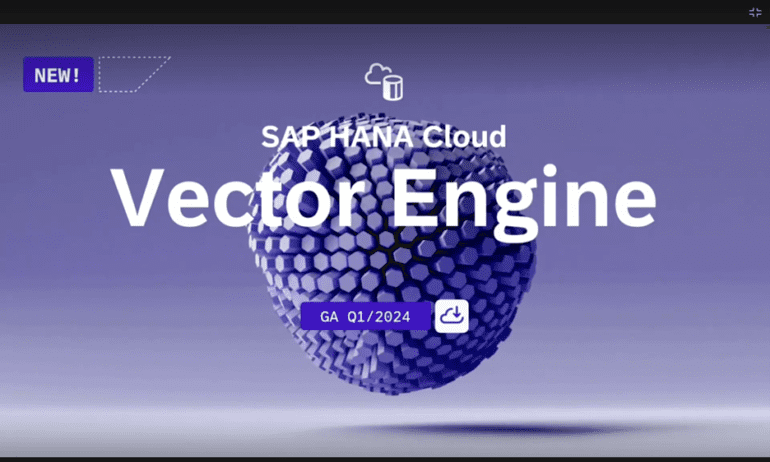- SAP introduces SAP HANA Cloud vector engine for seamless AI integration with business contexts.
- Vector engine combines large language models with real-time data within SAP HANA Cloud.
- Addresses limitations of existing LLMs by providing company-specific data and context.
- Key features include multi-model architecture, enhanced search and analysis, personalized recommendations, and optimized LLM utilization.
- SAP HANA Cloud cements its role as the default database in SAP’s generative AI strategy.
- Webinar on April 4 to explore the potential of SAP HANA Cloud vector engine.
Main AI News:
In a move poised to revolutionize the integration of artificial intelligence (AI) with business contexts, SAP announces the launch of its SAP HANA Cloud vector engine. This groundbreaking technology enables enterprises to harness the power of large language models (LLMs) while seamlessly integrating company-specific, real-time data and business process know-how within a single multi-model database: SAP HANA Cloud. Following its latest quarterly release, the vector engine is now readily available, marking a significant advancement in the realm of generative AI.
SAP HANA Cloud, a leading database-as-a-service offering, has already garnered widespread adoption within SAP Business Technology Platform (SAP BTP), serving as a cornerstone for intelligent data applications. With over 180 diverse applications and services currently leveraging its multi-model capabilities, SAP HANA Cloud stands at the forefront of innovation in the realm of data management.
In addressing the limitations posed by existing LLMs such as GPT-4, Llama2, Falcon-40b, and Claude2, SAP underscores the importance of contextual relevance. While these models boast remarkable capabilities, they often lack access to current, company-specific data and insights. To illustrate, consider an LLM as a colleague: highly intelligent yet devoid of memory beyond its initial training data. This deficiency renders it incapable of providing meaningful responses to queries tailored to a specific business context.
Enter the SAP HANA Cloud vector engine, designed to supplement these limitations by providing LLMs with comprehensive organizational data through a process known as “retrieval-augmented generation.” This game-changing feature enables businesses to leverage the similarity between vectors to address complex business challenges effectively.
Key benefits and features of the vector engine include its multi-model architecture, enabling the unification of diverse data types within a single database, enhanced search and analysis capabilities, personalized recommendations, and optimized utilization of LLMs through contextual augmentation.
By integrating AI-focused technology, SAP HANA Cloud empowers businesses to combine intuition with data-driven insights, unlocking new possibilities for innovation and problem-solving. Furthermore, the vector engine cements SAP HANA Cloud’s position as the default database within SAP’s generative AI strategy, facilitating the creation of next-level user experiences alongside other services within SAP BTP.
As SAP continues to develop foundation models tailored to specific industries and processes, SAP HANA Cloud remains at the forefront of innovation, offering a comprehensive solution for storing, processing, and analyzing diverse business data within a unified platform. Whether enhancing search capabilities, gaining deeper insights, or optimizing LLMs, SAP HANA Cloud enables the development of applications that elevate user expertise and effectiveness.
To explore the potential of SAP HANA Cloud vector engine firsthand, interested parties are encouraged to sign up for an introductory webinar scheduled for April 4. With the promise of revolutionizing AI integration in business, SAP invites enterprises to join the forefront of innovation through its Early Adopter Care program.
Conclusion:
The introduction of SAP HANA Cloud vector engine signifies a significant advancement in AI integration for enterprises. By addressing the limitations of existing large language models and enabling seamless access to company-specific data and context, SAP is poised to revolutionize the way businesses leverage AI for decision-making and problem-solving. This innovation not only enhances the capabilities of SAP HANA Cloud but also underscores SAP’s commitment to driving digital transformation in the market. Enterprises can expect improved efficiency, enhanced insights, and greater innovation potential as they harness the power of SAP HANA Cloud vector engine in their operations.

